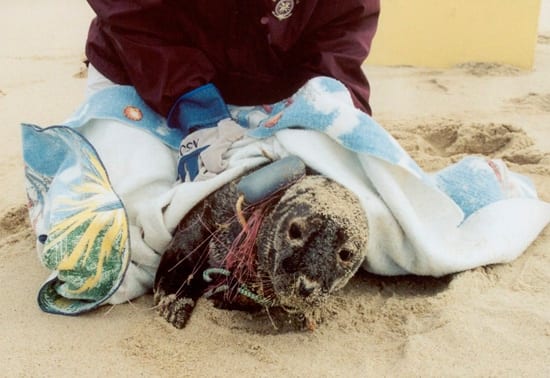Should Every Stranded Dolphin or Seal Be Saved?
January 1, 2008
A sick or injured seal or dolphin is found stranded on a beach. Should limited marine mammal protection funds be spent to rehabilitate the animal, or would they be better used to increase public education, law enforcement, or research activities? Six marine mammal specialistsspanning the research, conservation, veterinary, education, and stranding network communitieshave taken on that heart-wrenching question in a paper published in the journal Marine Mammal Science. The authors, led by Michael Moore of the Biology Department at the Woods Hole Oceanographic Institution, have proposed an innovative “decision tree” to sort out the conflicting priorities and issues that arise in the United States when a distressed animal comes into human contact. The authors state: “Rehabilitation efforts should be evaluated on whether the likely benefits to science, nature, or knowledge outweigh the potential harm to individuals or populations.” The systematic framework assesses the risks, benefits, costs, and probabilities that branch out from various choices to euthanize, rehabilitate, and release stranded animals. For decades, stranded animals have been treated and placed in zoos and aquariums, but today there are more rehabilitated creatures than permanent homes for them. In some regions, there are also public sentiments that creatures should be released back into the wild, sometimes exposing healthy populations to sick animals. Emotion-charged decisions to rehabilitate can lead organizations to care for animals they have no assurance of funds to support or treat. “Marine mammal rehabilitation is an effort that currently lacks a coherent central set of core values, ethics, or goals…The effort remains inconsistent, poorly supported, and fractious.”
Related Links

